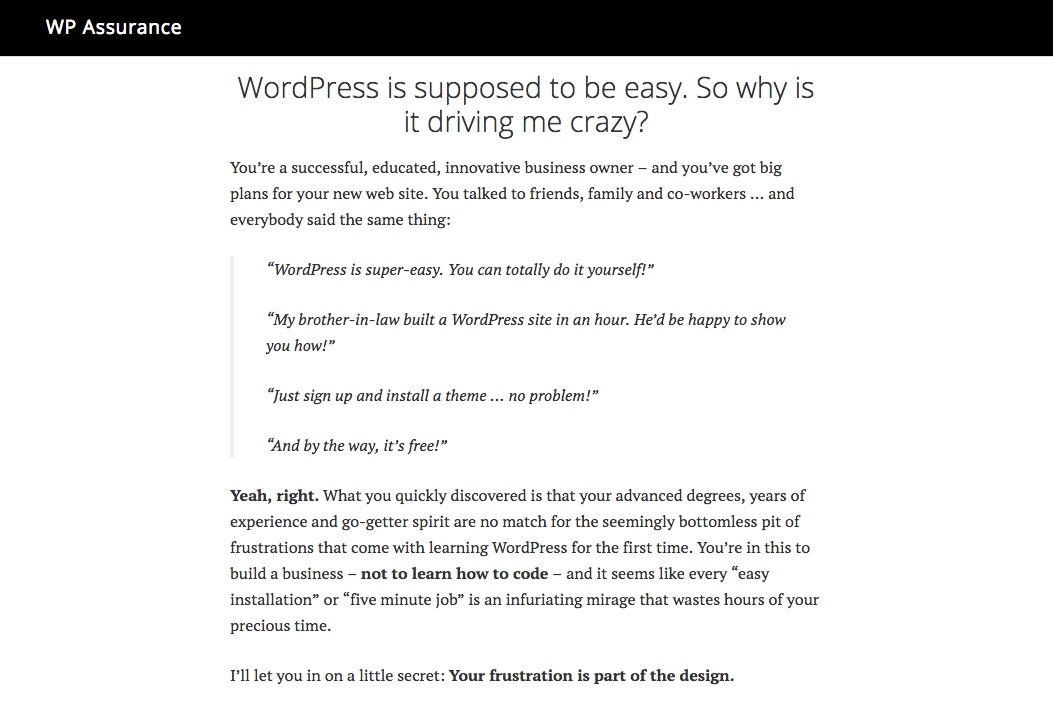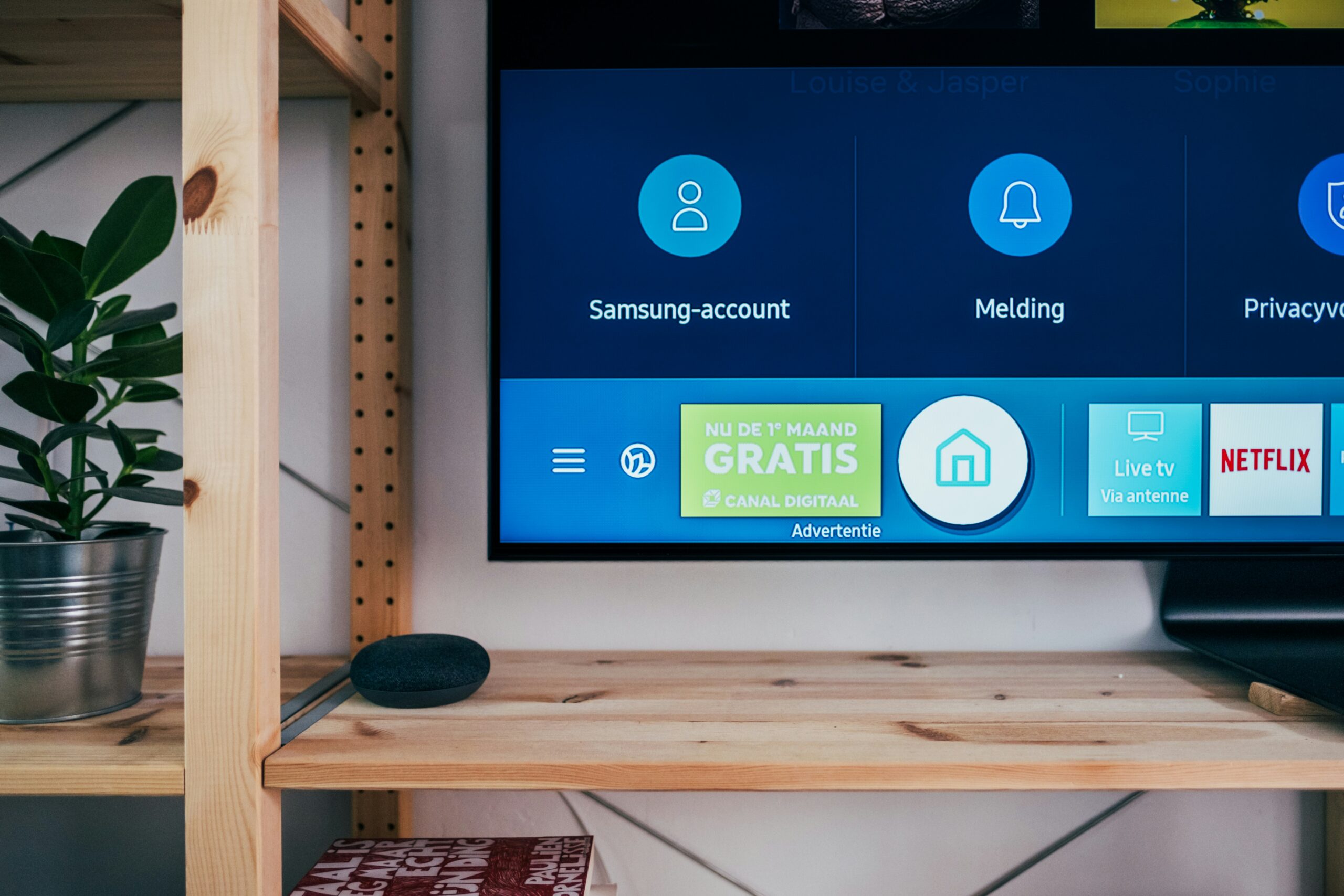
You don’t need a course to have paying students. Here’s how.
They say it takes a village to raise a child. Well, it takes a village to get an online course ready to launch, too. Just ask Zero to Launch student Rob Howard.
Rob is the proud parent of a newly launched online course, WordPress Without a Developer. And he got help getting it to this point from a surprising source:
Actual paying customers.
“I had 15 beta testers who worked through the course with me,” he said. “I’ve been writing the course basically concurrently with the beta testing.”
Hold up: is Rob saying he started selling his online course before that course even existed?
Yep.
“I wrote the sales page and just started selling it. I said, ‘I’m creating this thing. It’s gonna be ready soon. If you want to beta test it, you can get it for $50 instead of $300 by clicking this button.’”

Why beta test your online course?
You may have come across the term “beta” before. It comes to us from our friends in the tech world. Gmail was “in beta” for more than five years before Google finally decided it was ready to be a grown-up product, for example.
Don’t worry, we’re not advocating for five years of beta testing for your online course (unless you think that’s what your course needs). But there’s something to this idea of beta testing that online course creators can learn from.
Basically, “beta” is shorthand for “work in progress.” Tech companies release their apps and software in beta when they’re still working on them, but they need to test them with actual, real-live customers in order to:
- Make sure the product works
- Make sure that users can actually use it
- Find the bugs
- Get the last few miles to actual, finished product
- Avoid taking full responsibility for any issues. Kidding. Mostly.
Another term you may have heard: “pre-selling.” A lot of startups will pre-sell their product through a crowdfunding site like Kickstarter or Indiegogo. It’s a way to pull together the money to actually produce their product — but it’s also a way of finding out whether people actually want what they’re selling in the first place.
This is a work in progress, but I need to show it to customers to know if it works.
I have this idea but I want to make sure people will buy it before I build it.
Sound like good ideas? That’s because they are — and not just for the next paradigm-shifting, industry-disrupting gadget or app. You can beta test your online course. In fact, there are a lot of good reasons why you should:
You validate instantly. People are not exactly known for parting easily with their money. If they are willing to pull out their wallets and pay for something before it even exists, and then wait for the solution to come to them — even an imperfect one — that’s a powerful sign that your proposed solution has struck a nerve. “Even if it’s $5 — the difference between $0 and $5 is huge,” says Rob. “If you ask me, the difference between $5 and $100 is actually smaller than just getting any payment from somebody for what you’re talking about.”
You save yourself time. “Everybody is going to be nice to you [during immersion]. They’re not necessarily going to tell you the truth about what they’re going to buy,” says Rob. “So the sooner you can fail to get people to pull their wallets out, the better, because you’re not spinning your wheels and building this 20- or 50-hour thing that you’re investing a lot of time into, and then all of a sudden you’re wondering why no one’s buying.”
You get yourself a whole crew of accountability buddies. Once you put a sales page in front of people, and start promising them things, you’re on the hook to actually deliver — and that’s a good thing. “It lights the fire under you to create the thing that you just pre-sold,” Rob points out.
You have another chance to ask yourself: do I care? “When you beta test, you’re testing the waters for other people, but you’re also testing yourself. Because if you start building this product and you’re bored, or you hate it, you’re probably going to be bored and hate it for the rest of your life,” says Rob. “That’s a huge red flag for you that this is not a business idea for you, and you need to find something that is a better combo of ‘People will pay for it AND I care about it.’”
You make sure you’re building the RIGHT solution in the first place. “Immersion gets you to the pain points, but not to the solution,” says Rob. When you start selling to people, and then you give them pieces of your course to react to — that’s what gets you to your solution. “You start getting into the nitty gritty of what actually is the right way to deliver this to people, and how this needs to work in order to be useful to them.”
Don’t ask people if they care. Make them show you.
Rob wrote his first outline of the WordPress Without a Developer course six months before he officially launched the course, and started testing his material with his beta crew three months after that.
When you hear that timeline, it sounds fast. But the truth is, this course has been years in the making, not months.
Rob has been going through Zero to Launch since 2014. He’s gone through the immersion process a few times with different ideas — even beta tested a few. WordPress Without a Developer is the first time one of his ideas has gotten all the way to launch.
“I have a graveyard of ideas,” he says. “That’s the miserable reality of this process: it takes a long time to find the golden goose solution. There are a lot of things that people are gonna reject or ignore.”
And let’s be clear: Rob got ignored plenty. “I had a list of about 2,000 people, and pushed out six or seven solution ideas to them in a matter of three months. Every couple weeks I’d send an email that was basically a pitch: ‘Click out to a sales page, and then I want you to do something.’ I was testing rapidly, because I had like nine ideas, and I wanted to get those ideas in front of people and then let people show me if they cared based on their actions.”
The fact that so many of his ideas failed isn’t actually a bad thing. “You actually want to put your ideas in front of them so they can ignore you, because that is also good feedback. That tells you, ‘OK, people don’t care about that, and I’m not going to waste time building something that people don’t care about.’”
And sooner or later, if you’re paying attention and meeting your audience where they are, something changes. “You may get ignored nine times, but then the tenth time, you get 20 sales, and you’re like, ‘Boom. This feels different. People are saying things to me that make me feel like they’re excited. And they’ve actually paid me money.’”
“I can help people with this”
For Rob, that “boom” moment came in the form of the idea that became WordPress Without a Developer.
“My target audience is business owners who know they need a website. They’ve been frustrated with watching YouTube videos about it. Maybe they’ve hired a developer and it just was a miserable experience and they wasted some money. Now they want to have ownership and control, so they can do it themselves now AND know what to do later on as they grow.”
All of this clarity — about who his target audience is, what their challenges are, and what solutions they had already tried — that comes straight out of immersion, and conversations that Rob had with his would-be customers about what exactly it was that they needed.
One thing that the WordPress Without a Developer idea had that been missing from Rob’s previous ideas: emotional intensity.
“People were literally yelling during immersion. They were saying things like
‘I HATED this.’
‘This guy screwed me over.’
‘I wasted so much time.’
‘What the hell does this even mean?’”
When Rob saw that the same frustrations were coming up again and again, and saw the emotional intensity that was coming out of people as they talked about it, he knew he had his idea.
“I was like, ‘Yes. There’s actual passion here, and I can help people with this.’”
Like this blog post? Learn how to create amazing content like this that attracts and engages your target buyers with our FREE Ultimate Guide To Remarkable Content.
Go directly to sales page
Once Rob got those green light signals from a handful of immersion contacts, he didn’t wait around to see if the next 20 people would say the same thing.
“It’s really important to do immersion up front. But at a certain point, after your eighth or tenth immersion interview, if you’re hearing the same things over and over again, I think that’s the point where you jump off — create something and put it in front of people and beta test it.”
For Rob, the next step in that process was to write a sales page, and then let his audience show him if he was on the right track.

“I wrote 500 to 1,000 words saying:
- Here are your pain points. You hate this. You don’t understand this. This wastes your time.
- Here’s my idea. Here’s how I propose to make this problem go away. I’m presenting myself as someone who is solving this problem.
- Here’s what I want you to do. Click this link to join my beta program for $49.”
In a lot of ways, selling a beta program is not that different from selling anything: you identify the problem, you show people you have a solution, you give them a chance to opt in.
But there’s one crucial difference: when you’re selling a beta program, you have to set that expectation up front. Testers have to know that what they’re getting is a work in progress, so they don’t get your semi-formed, helter-skelter mess of a V1 product and think, “This is what I paid for?”
Here’s how Rob framed it:
“This is going be released to the public in a few weeks. At that time, it’s going to cost $300. You can get lifetime access to it for $49 if:
- You are willing to sign up for the beta in the next two weeks.
- You have 10 hours to commit to taking the course over the next month.
- You’ll give me very specific feedback throughout the process.
- If you love it, you’ll give me a testimonial.”
Something else to note here: the way that Rob frames this is not just that beta testers are doing him a favor (although there’s an element of that, too): he keeps the focus on what’s in it for them.
“It’s basically a fair trade,” says Rob. “I’m presenting it as a huge discount on something that I know they want. I’m telling them I’ll be there the entire time to walk them through the process. But I’m also saying, ‘I need you to help me with this. You are actually going to shape this product with me.’”
For a lot of people, that idea — that they’re helping make something happen, and helping shape what it will become — that’s exciting. Call it the Kickstarter Effect. It’s why people pay money to buy a board game or a new smart home device that doesn’t exist yet: they want to feel like they’re part of something special.
Rob sent his offer to his list, and it worked. Within a matter of weeks, he had 15 beta testers who were ready to jump in, learn how to build their own WordPress site — and help Rob shape WordPress Without a Developer into what it would be when the rest of the world saw it.
Sell first. Scale later. Learn in the middle.
Once the beta testers were on board, Rob started sending the course to them — one module at a time, gathering feedback every step of the way.
“I’m still pretty much matching the outline that I envisioned, but there have been so many places where actual beta testers have helped me refine things and called me out for stuff.”
Some highlights of what Rob learned from his beta testers:
- Pacing & structure. “There have been times where I’ve gone back and re-recorded that whole video or rewritten that whole lesson, because multiple people said ‘I didn’t get this. Why am I doing this in this order?’”
- Short videos > Long videos. “I would see users watching the first video, and never watching the second one. Or saying ‘Oh, I’m going to save this for my commute, because that’s the only time when I have an hour.’ The combination of those types of responses led me to say, ‘These need to be shorter.’”
- New product features. “People were telling me, ‘This is really cool, but man, I would love to just pick your brain sometimes. I wonder if there’s a place for me to ask questions on very specific things as I go.’ So I created a little Ask Me Anything program that’s like $20-$30 per month, where I say, ‘There’s no need for you to hire a developer and pay them by the hour. You can just join this little community, and literally ask me any question that you want to ask me forever.’ I was not going to create that, but once I got that question a few times, I realized, well, I can’t not do this. It’s such a natural add-on, and people are asking for it.”
As for how he that gathered feedback?
“I emailed people,” he said. “We set up a couple of video chats along the way. I even went to lunch with one of my beta users who just happened to be in the same city as me.”
That’s right: no hi-fi testing software or task management program — at least, not yet.

”I’m a big fan of Paul Graham’s advice to do things that don’t scale early on. In the time it takes you to design some kind of high-tech feedback system, you could have already emailed or called all of your beta testers. I have 15 people who are going through this process, I can talk to them all, and it’s better to talk to them all than to try to automate it in any way.”
Why is it better? “You really don’t want to scale until you have enough personal experience that things become obvious to you. If you’re scaling something up that’s questionable, you’re wasting a lot of resources. There’s a huge space between ‘Yeah, I sort of have this,’ and ‘I have a 99% success rate.’ Direct interactions with your customers are how you get to that high success rate. THEN you tune it up. If you market something to a million people, and it has a bunch of leaks in it, you’re putting yourself in a position where you’re going to be putting out fires forever.”
This is something that we’re big on here at GrowthLab: Take the time to get it right now. That decision will pay dividends for months and years down the road.
You’re in this for the long haul
With the “sell to a real person” hurdle covered times 15, and all of the critical feedback from his beta testers implemented, the V1 version of WordPress Without a Developer is officially live and available for anybody to buy.
But Rob is quick to point out that the refining process is just beginning.
“I don’t feel like it’s necessarily ever going to be a completely finished product. You can always add to it and improve on it and receive useful feedback,” he says. “The next hundred users are going to give me much more useful and different feedback than the first 10. Different people from different backgrounds might have different experiences. Somebody who’s gone through ZTL themselves is of course going to have a different experience than someone who has never touched a website or a computer before.”
Another mindset that has helped Rob get comfortable with the idea of iterating and revising his course: realizing he’s in this for the long haul. “When you think of your course as a resource that people can use as a reference, as well as a one-time learning experience that happens over a month, that mindset means you can always go back and improve it. You want to set yourself up to be building something that is going to be useful to people forever. Because otherwise, why would they spend $300 or $1,000 to buy something that they’re just going to throw away?”
That mindset — setting out intentionally to create something that is going to have lasting value for your audience — that’s how you create customers for life.
But as Rob points out, it’s also how you silence your inner perfectionist and convince yourself to put something out there in the first place.
“You have to be comfortable saying to yourself, ‘This is never done. But it is good enough to start showing people and selling people.’”
Like this blog post? Learn how to create amazing content like this that attracts and engages your target buyers with our FREE Ultimate Guide To Remarkable Content.
Written by Ramit Sethi
Host of Netflix's "How to Get Rich", NYT Bestselling Author & host of the hit I Will Teach You To Be Rich Podcast. For over 20 years, Ramit has been sharing proven strategies to help people like you take control of their money and live a Rich Life.



